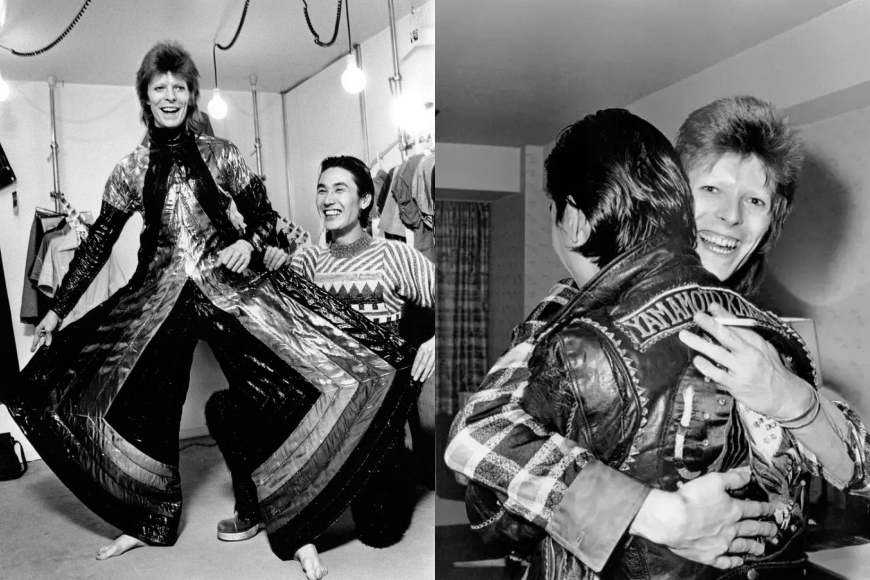
Renowned Japanese fashion master Kansai Yamamoto passed away on the 21st of this month due to acute myeloid leukemia at the age of 76, as confirmed by his daughter yesterday. As a Japanese fashion master, Kansai Yamamoto’s name may not immediately evoke the same level of recognition as the “Big Three” of Yohji Yamamoto, Rei Kawakubo, and Issey Miyake, but Yamamoto’s early international success and long-standing relationship and collaboration with British avant-garde singer David Bowie have long been recognized in the fashion industry and popular culture. Why not take a moment to look back today?
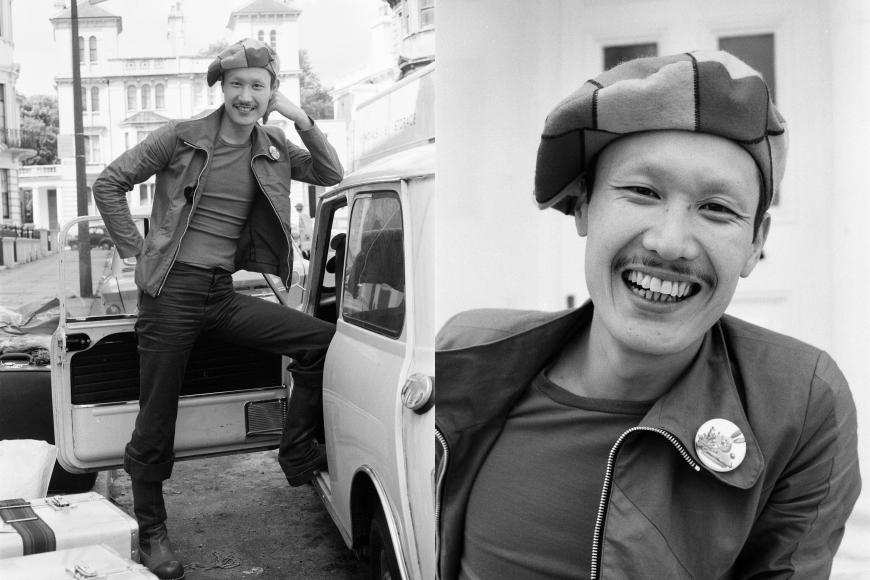
Born in Gifu City, Yohji Yamamoto, unlike another “Master Yamamoto,” was able to smoothly enter a Japanese university despite growing up during the turbulent times of World War II. However, he majored in English and civil engineering. Influenced by his father, a tailor, he boldly transferred to the Japan College of Fashion before completing his university studies. In the end, he successfully graduated and won the prestigious Japanese design award “So-en Award” in 1967. Initially poised for a career in a multinational corporation, Yohji Yamamoto gave it all up to study under the renowned Japanese designer at the time, Junko Koshino, starting as a pattern maker and later establishing his eponymous brand. After making a name for himself in Japan, Yohji Yamamoto traveled to London to showcase his work, and five years later, he made his way to Paris, becoming the first Japanese designer to step onto the European fashion stage.
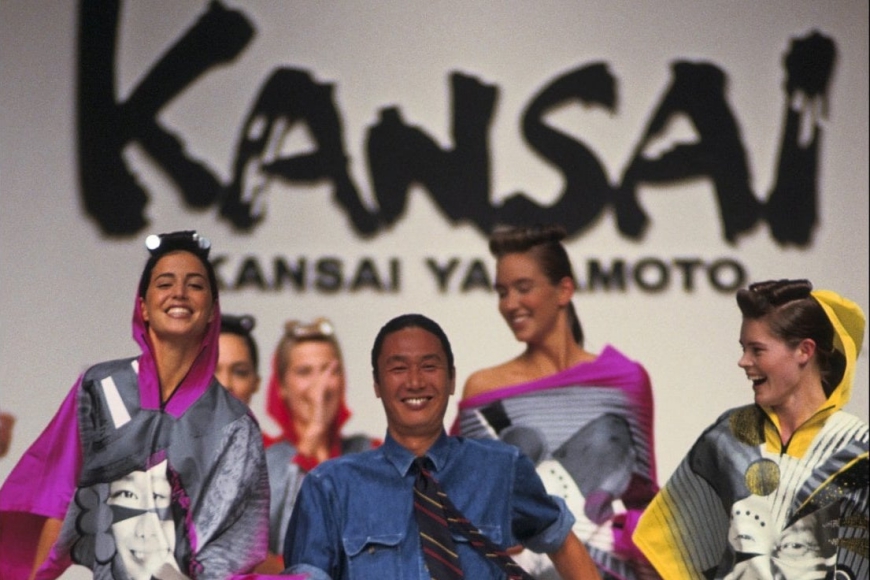
At the age of 27, becoming the first Japanese designer to hold a fashion show in London, many may have thought that Mr. Yamamoto met David Bowie at that time. However, the truth is, David Bowie had been attracted by Mr. Yamamoto’s bold designs earlier, and later even pre-ordered several pieces from Mr. Yamamoto’s first London presentation in his own name. Subsequently, when David Bowie wanted to meet Mr. Yamamoto, he instructed his manager to invite Mr. Yamamoto to visit New York, and during this meeting, David Bowie proposed the idea of wearing his clothing at the famous Radio City Music Hall performance, officially suggesting a collaboration.
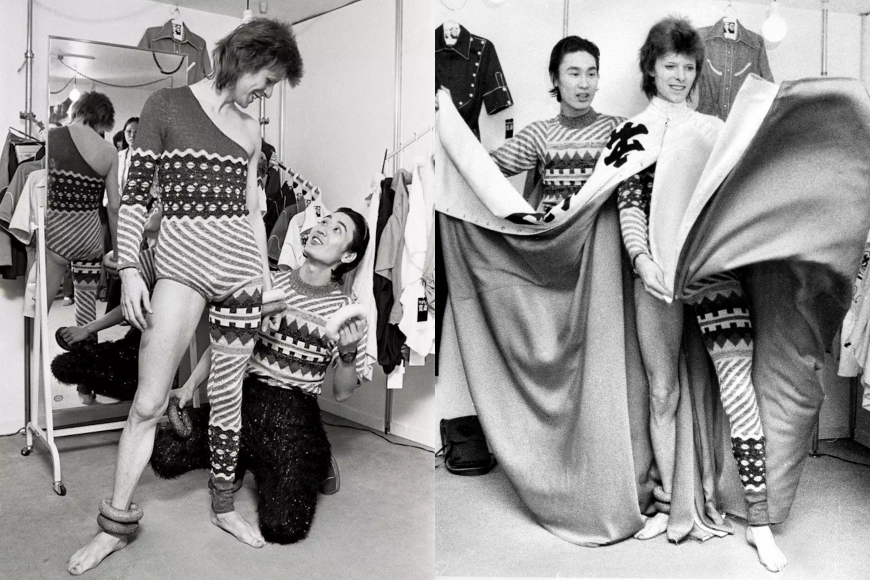
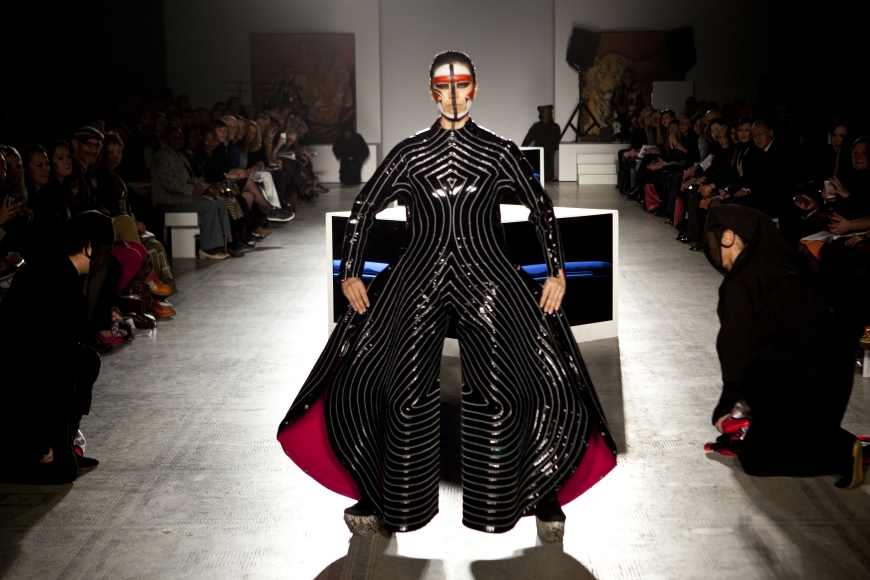
David Bowie’s collaboration with Yamamoto in “Ziggy Stardust” and “Aladdin Sane” is undoubtedly a successful example in contemporary popular culture. However, in the conservative society of 50 years ago, the androgynous appearance of David Bowie and Yamamoto’s bold aesthetics coming together were filled with endless unknowns. But precisely because of this unclear situation, it also created a rare opportunity. Yamamoto’s original designs were mostly focused on women’s clothing, even when faced with the ever-changing image of David Bowie, he still had to consider how to perfectly match the clothing with the wearer – interpreting “genderless” clothing became a major challenge. Yamamoto also admitted, “There are many times when people with conventional bodies look at me with strange eyes.”
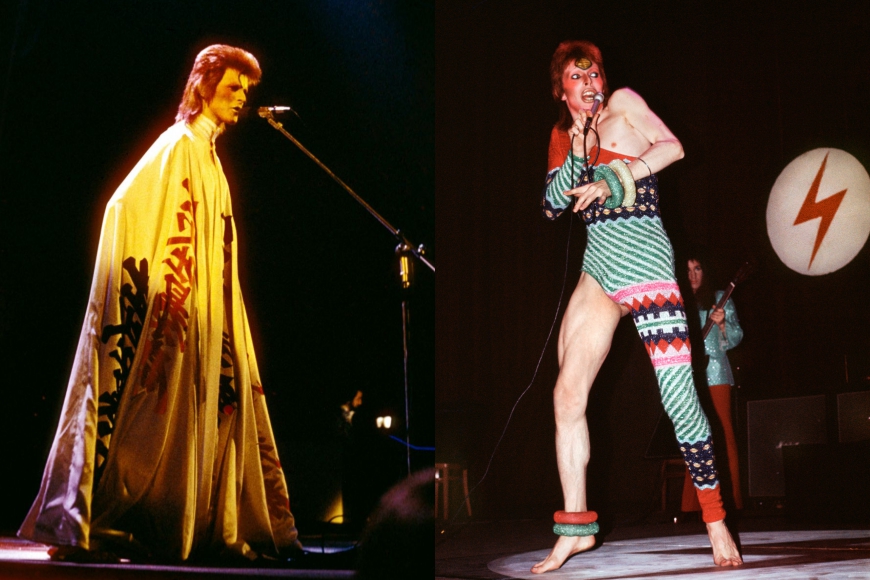
With stunning colors, bold aesthetics, and a touch of drama, Yohji Yamamoto’s designs are often inspired by Japanese kabuki theater, ukiyo-e art, yakuza tattoos, and samurai. When he boldly brought his fashion to Western countries, Yamamoto admitted that everything was unknown. “Every day, I feel like I’m in a fashion show, with people around me as the audience,” he said. Despite facing an uncertain future, Yamamoto remains confident and hopeful about his designs and ideas. In a conversation in 2018, he revealed that dressing David Bowie in original oriental clothing helped him understand Western fashion better and, most importantly, understand David Bowie himself.
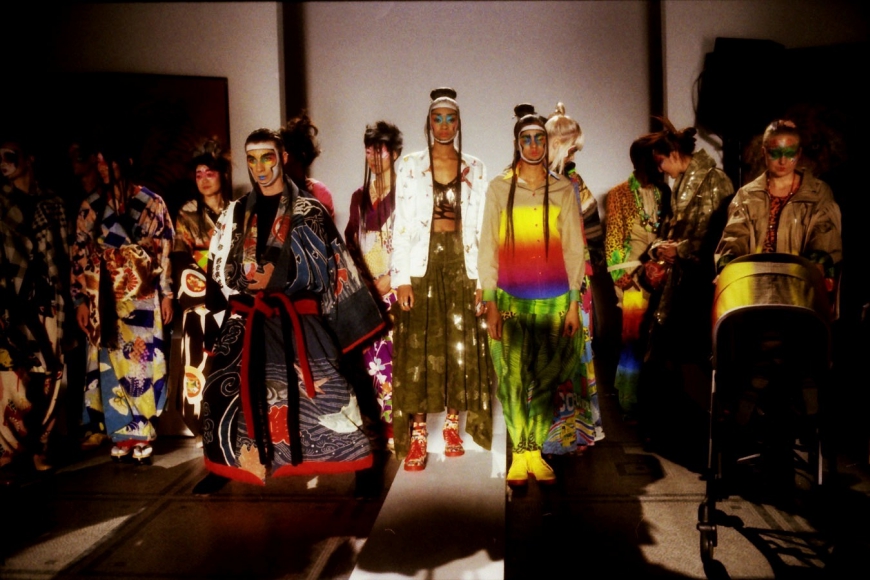
David Bowie, who designed clothing entirely for women, eventually succeeded. Yohji Yamamoto once described David Bowie in this way: “David is always very polite, but when he steps on stage, he will activate the reverse button and transform into David Bowie.” This statement can be interpreted as David Bowie being someone who knows how to express himself through music and fashion. Yamamoto shared in 2016 with “Dazed” that their collaboration was always full of chemical reactions. Whenever he wore his designs, everything would come together – the clothes, the posture, the songs, the music, etc. – all becoming a part of David Bowie, who knew how to combine these elements to convey the message he wanted to convey. What’s even more interesting is that Yamamoto admitted that when he collaborated with David Bowie, he didn’t know any of David Bowie’s songs at all. Therefore, the two of them completely inspired each other through conversation and interaction, creating this dreamy combination and producing one piece after another.
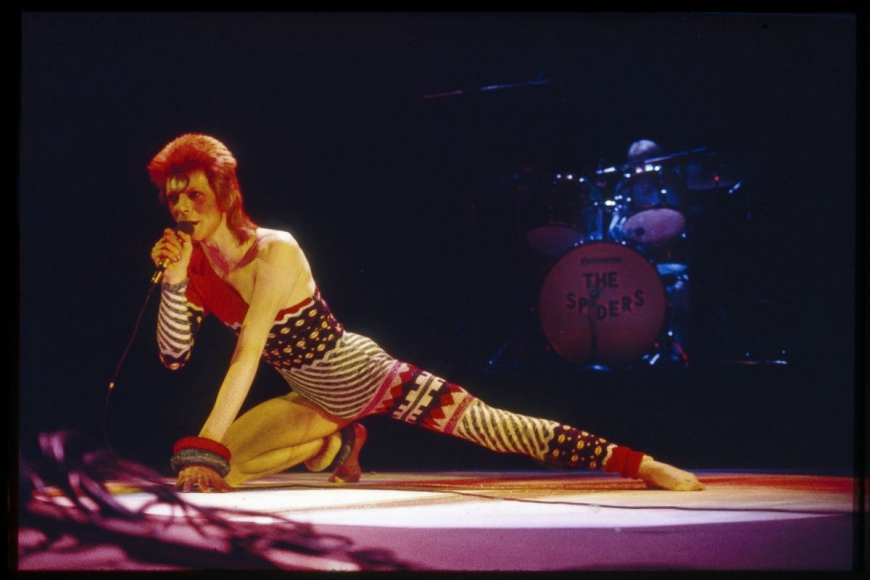
Whether it’s Yohji Yamamoto’s favorite iconic piece, the three-dimensional Tokyo Pop striped jumpsuit, or the “outburst of fire and power” Chinese character cape, one thing is certain: Yohji Yamamoto’s courage and influence are definitely not inferior to legendary designers like Yves Saint Laurent or Pierre Cardin, Maison Margiela. Especially when a young Japanese person brings such a non-mainstream cultural and aesthetic impact to Western society in a conservative era, it is even more admirable. And to this day, the “genderless” clothing he designed has slowly become a statement in the fashion world, I believe even Yohji Yamamoto or David Bowie could not have imagined.
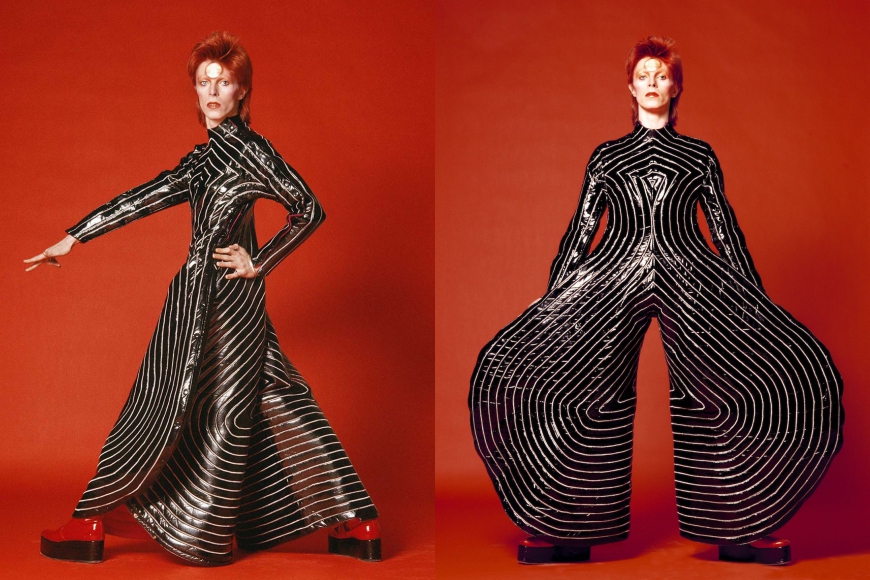
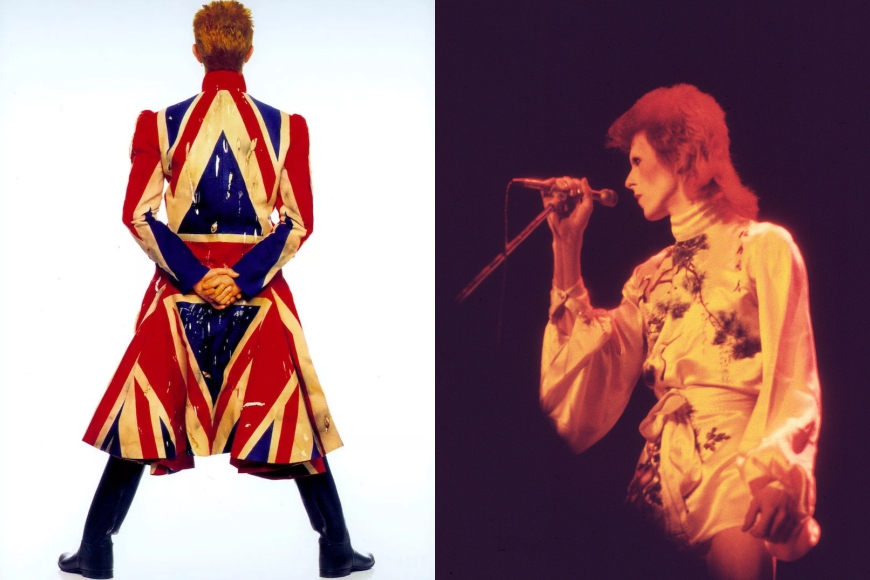
Today, after many years, Kansai Yamamoto can finally meet this good friend again, whom he praised as “the one who best understands how to interpret himself with music in fashion”, allowing them to reunite in another way and appreciate the current fashion scene. Rest In Peace, Kansai Yamamoto.

